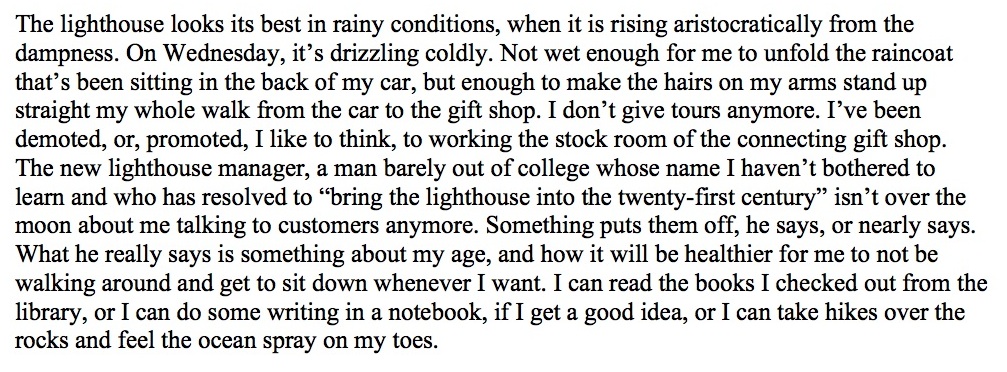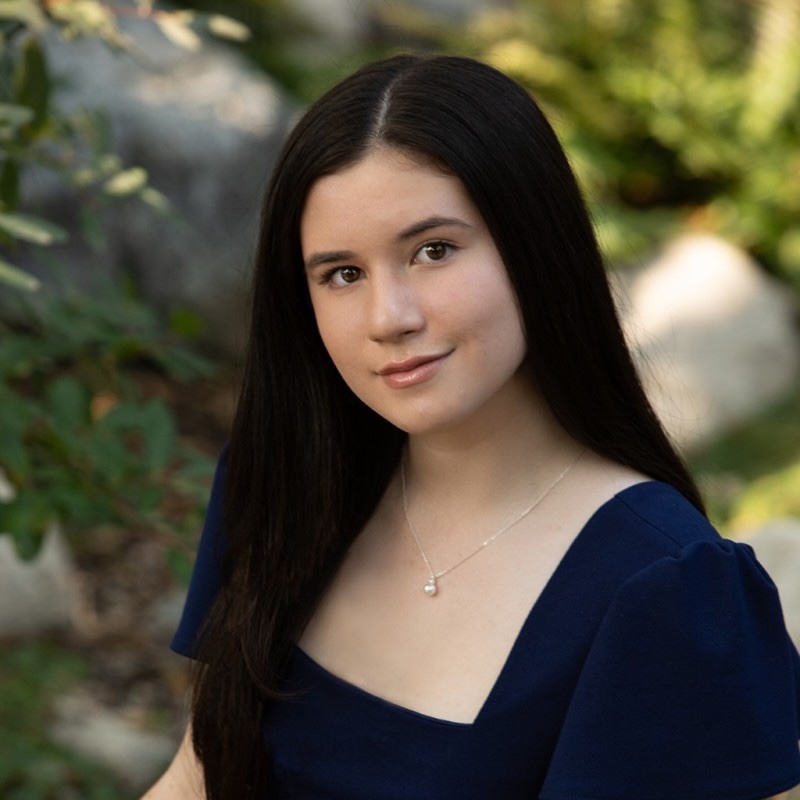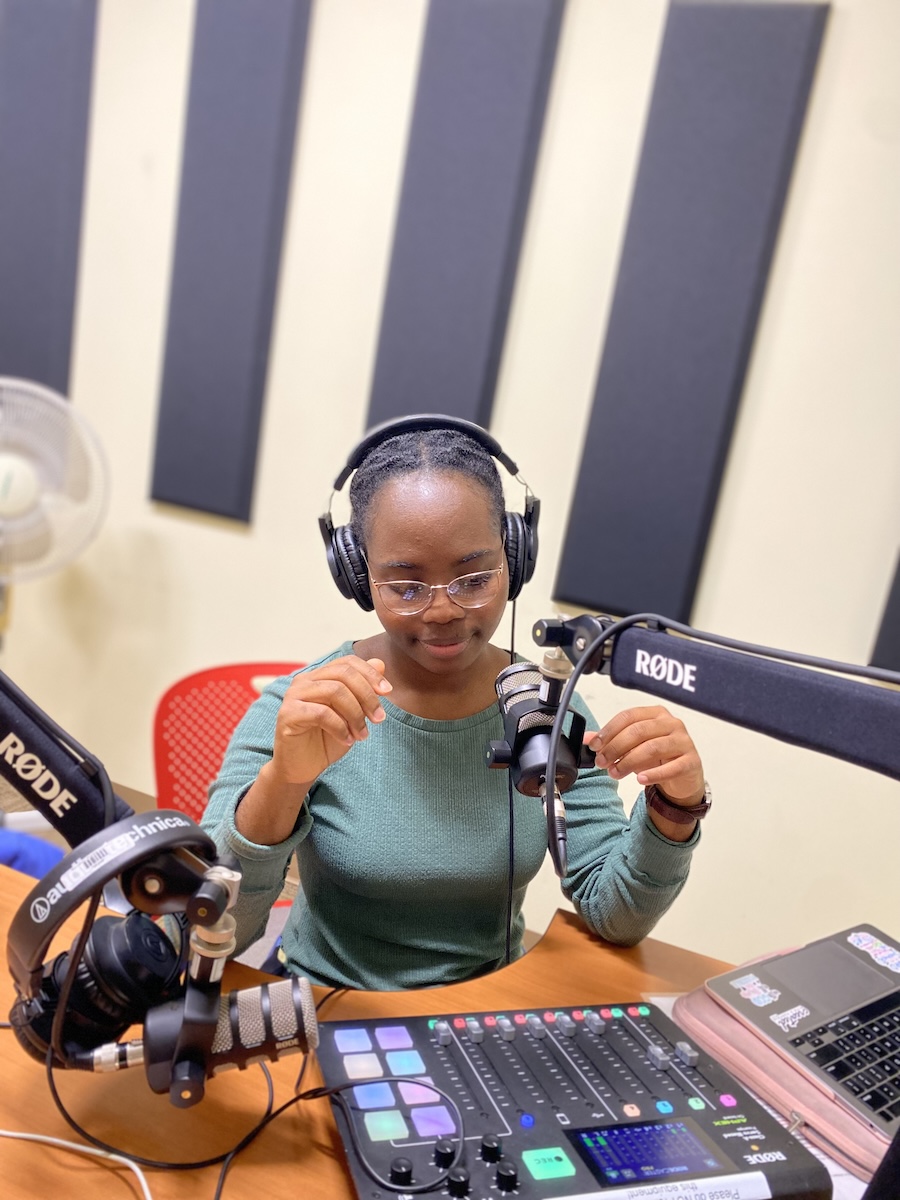Maine Coast Inspires Bowdoin Writing Fellows: Aleksia Silverman ’19
By Rebecca GoldfineTwo Bowdoin students — Aleksia Silverman ’19 and Maya Morduch-Toubman ’18 — spent this summer exploring Maine's coast, gathering material for writing projects that aim to capture, in different ways, a bit of what it means to live here. Both received Rusack Coastal Studies Fellowships from Bowdoin to pursue their projects.
In this first story of a two-part series, we look at Silverman's project, in which she read widely about Maine and also traveled along the coast to gather material for her own fiction. Read about Maya Morduch-Toubman's project here.
****************************
The first thing Aleksia Silverman shared, when she recently sat down in Smith Union to talk about her writing project, was her summer reading list. Scanning her fairly long list for a minute, she began naming the authors she recommended the most.
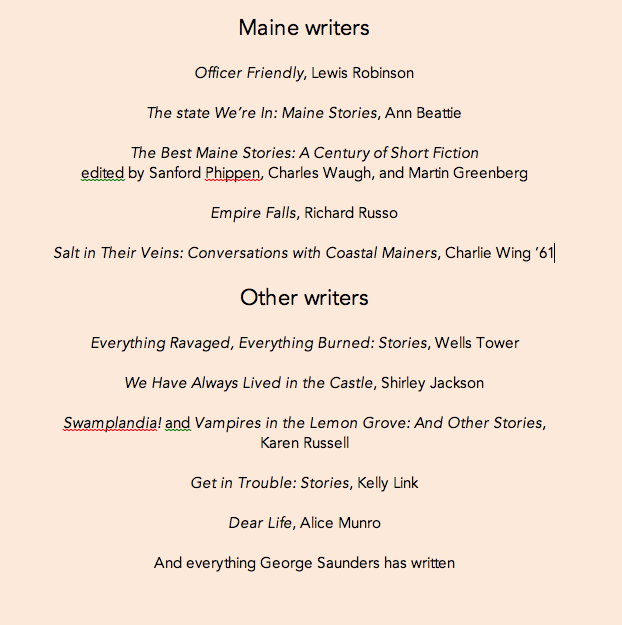
After concluding her endorsements with George Saunders, Silverman explained why she admires him so much. "He's incredibly comedic and sharp and witty, and he does interesting things with phrasing and voice," she said. She added a bit later: "His stories are heart wrenching and emotional. They're about people who at the end have nothing."
While Silverman tends to lean a bit toward the "crazy stuff" — wild and imaginative fiction by Saunders and Karen Russell, for example — she said she also appreciates other writers like Alice Munro, who have a more unadorned, realistic style. Munro, too, writes heart wrenching short fiction — "they're just not heartbreaking like George Saunders, which hurts like when someone punches you. Instead, when it's sad, it's like a headache, a dull pain." Silverman continued, "It's interesting to understand how writers evoke emotions. The most valuable thing you can do as a writer is make your reader feel."
As for the Maine writers on her list, Silverman said she reads their work to discern the crack between the enchanted, mythical version of coastal Maine — adorned with lighthouses, rocky headlands, and lobster rolls — and the version one actually encounters here.

"I identified trends," she said, noting that some of the older works on her reading list, in particular, "portrayed Maine as an untamed or idyllic landscape. Either way, they were filled with lobstermen." Other topics she paid attention to were economic disparities and tensions between social classes, including between visitors and locals, and what it is like to grow up and stay in a small town. She's interested, also, in how these dynamics all get played out against the backdrop of Maine's natural beauty. Silverman, an English major and history minor, grew up in Brookline, Mass.
Bowdoin Professor of English Brock Clark advised Silverman this summer, describing her as a "terrific writer: playful, inquisitive, interested in the mistakes people make and how, in denying that they've made them, often make them worse."
"But her work this summer," he continued in an email, "as it's become more focused on Maine, on place, has deepened: I don't mean that Maine, as a subject, has provided her a sense of gravity (her work already had plenty of that, although likewise her work is often very, very funny); what I mean is that the more she's thought about place, the better sense she has of her characters, of who they are, and why they do what they do. The fellowship has been invaluable for her: not only has it given her the time, and space, and means to write, but it's also given her a place that means something to her characters, and subsequently to her readers."

Silverman first began investigating the way idealized notions of Maine played out in art during a fellowship she had last summer at the Bowdoin College Museum of Art. She researched Maine art between 1900 to present to prepare for a potential future exhibit. "Coming out of that, I was interested in Maine, in the coast of Maine, and how art worked with and against people's preconceived notions of Maine," she said.
The following year, she took both an introductory fiction workshop and an advanced fiction workshop with Brock Clark. She decided, when summer came around, to pursue her own writing project in which she explored Maine and the idea of Maine.
Throughout the summer, she traveled to places in Maine — including Bar Harbor, Ellsworth, Bangor, Harpswell, Portland, Cape Elizabeth, Freeport, Saco, Old Orchard Beach, and Kennebunk (she focused on southern Maine). She said really enjoyed Old Orchard Beach. "It is so bright and filled with all sorts of people and weirdness: Elvis impersonators, Canadians, college students and families, and people from everywhere," she said. "There's this grim intensity to have fun."
Along the way, she took note of moments or things that she could use in her stories. "I got inspiration for small things, small details, that I could flesh out and create something whole from," she said. For instance, in Old Orchard Beach, Silverman was shocked to see that a shop was selling items, like license plates, that could be emblazoned with the Confederate flag. This triggered a story about a middle-aged woman who gets introduced to white nationalism from a male friend. After creating a video series promoting white superiority, she ends up committing a hate crime.
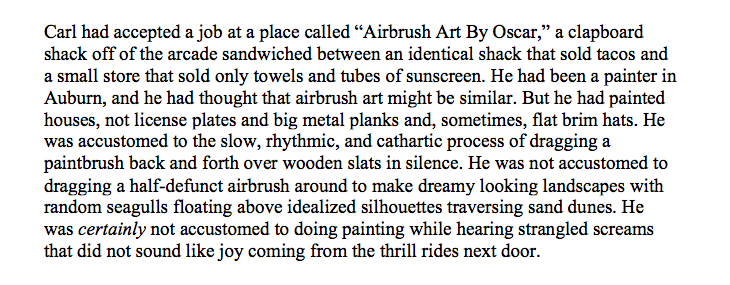
The characters in Silverman's stories span ages and social groups. One of her protagonists flees to Portland from her small coastal village after she kills her best friend with rat poison. But she finds it hard to break this destructive pattern, and ends up poisoning her boss's goldfish with the same technique.
In the story about white nationalism, a husband and wife are having marital problems. Silverman uses this couple to explore the sometimes stifling dynamics between a couple, and how this might mirror the claustrophobia of living in a small, remote place.
In her story, "Superfan," her protagonist is an older female lighthouse worker — that is, she works in the lighthouse's gift shop. She is reeling from the departure of her husband, who has left to become a monk in Tibet, and so she begins to watch Westerns on TV obsessively.
